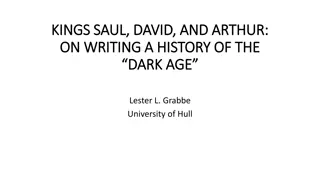
Physics Examples on Vibrations and Waves
Explore worked examples in physics related to vibrations and waves, including scenarios with masses on springs and harmonic forces. Learn how to calculate displacements, damping constants, resonance frequencies, and more.
Download Presentation

Please find below an Image/Link to download the presentation.
The content on the website is provided AS IS for your information and personal use only. It may not be sold, licensed, or shared on other websites without obtaining consent from the author. If you encounter any issues during the download, it is possible that the publisher has removed the file from their server.
You are allowed to download the files provided on this website for personal or commercial use, subject to the condition that they are used lawfully. All files are the property of their respective owners.
The content on the website is provided AS IS for your information and personal use only. It may not be sold, licensed, or shared on other websites without obtaining consent from the author.
E N D
Presentation Transcript
CH 1, Worked Example In the example of a mass on a horizontal spring, m has a value of 0.80 kg and the spring constant, k, is 180 N/m. At time t = 0 the mass is observed to be 0.04 m further from the wall than the equilibrium position and is moving away from the wall with a velocity of 0.50 m/s. Obtain an expression for the displacement of the mass in the form x(t) = A cos( t+ ), obtaining numerical values for A, , and .
CH 2, Worked Example A mass of 2.5 kg is attached to a spring that has a value of k equal to 600 N/m. a) Determine the value of the damping constant b that is required to produce critical damping. The mass receives an impulse that gives it a velocity of v0= 1.5 m/s at t = 0. Determine the maximum value of the resultant displacement and the time at which this occurs. b)
CH 2, Worked Example When the E string of a guitar (frequency 330 Hz) is plucked, the sound intensity decreases by a factor of 2 after 4 s. Determine the decay time , (ii) the quality factor Q, and (iii) the fractional energy loss per cycle. (i)
CH 3, Worked Example A mass of 1.5 kg rests on a horizontal table and is attached to one end of a spring of spring constant 150 N/m. The mass on the spring is subjected to harmonic force of the form F(t) = F0cos( t) where F0= 0.75 N and = 6 s-1. The damping constant b = 3.0 Ns/m. Determine the amplitude and relative phase of the steady state oscillations of the mass. 2. Show that if the applied frequency were adjusted for resonance, the mass would oscillate with an amplitude of approximately 2.5 x 10-2m. 1.





















